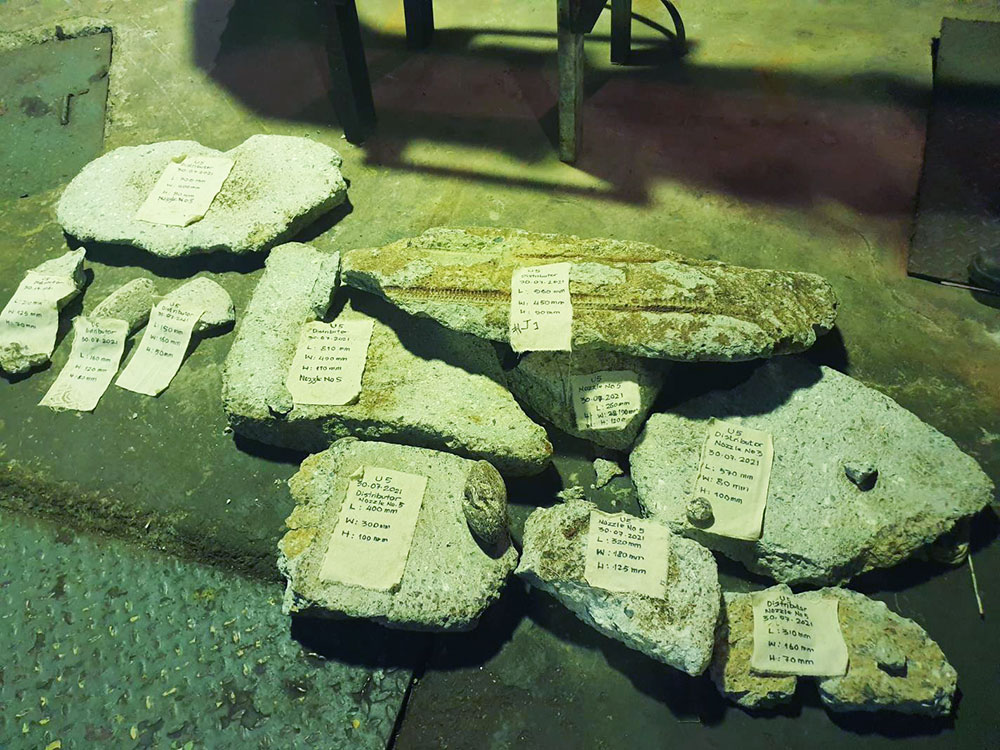MB Subba
As the 1,020MW Tala hydropower plant will remain shut from the end of December to the end of March, the country is likely to lose revenue of about Nu 840 million (M).
This is the period when the river charges are at their lowest generation, and revenue losses from the shutdown are kept to a minimum.
Druk Green Power Corporation Limited’s (DGPCL) managing director, Dasho Chhewang Rinzin, said: “If timely rectification work is not carried out, and should an event of a tunnel failure occur, the effort, time, and cost involved would be far greater. And of course there would also be the revenue losses to consider.”
In terms of power generation, the losses during the three-month shutdown of the country’s biggest hydropower plant will be about 380 million units (MU).
He said that during the shutdown, Bhutan will experience a shortfall in power supply for the domestic market almost equivalent to the generation loss due to the Tala shutdown (380 MU).
He said that arrangements were being made to import power from India to cater to the shortfall in power supply during the three-month period.
“The modalities for the import from India to cover the electricity deficit are being worked out with our Indian partner, PTC India (Power Trading Corporation of India),” he said.
According to DGPCL, the physical inspection will require at least 45 days to dewater the tunnel. Once the rectifications are completed, another 15 days will be required to refill the tunnel.
There is, therefore, only a 30-day window for physical inspection of the headrest tunnel (HRT) and conducting the rectification.
The rectifying activities, Chhewang Rinzin said, are being “very carefully” planned. “We will make every attempt to keep the shutdown to a minimum.”
WAPCOS, the design engineers for the Tala power plant, he said, have cautioned that dewatering should be managed as per certain applicable codes.
Finance Minister Namgay Tshering said that the closure will have a financial impact on the government.
“We have no choice but to repair the plant,” he said, adding that the situation will get worse if it is not done in the lean season.
He said the plant closure had not been a predicted consideration when the government made its fiscal projections.
“Now we have to see how we can offset this loss,” he said, adding that the fiscal projections will be adjusted accordingly.
The finance minister said that the revenue loss from the closure will be triple the estimated loss if the repairs are carried out now. The government receives hydropower revenue in the form of taxes from the DGPCL.
The plant was first shut down on July 19 after large chunks of debris clogged the gates of the intake tunnels due to several days of heavy rain. The plant has been facing issues ever since.
Dasho Chhewang Rinzin said that there have been frequent incidents involving disintegrated concrete mass and debris from the water conductor system of Tala power plant at the distributors and nozzles of the generating unit.
“It is apparent from these incidents that there are some weak zones in the head race tunnel that could have serious consequences to the integrity of the water conductor system in future if not attended to,” he said.
He added such incidents could result in major catastrophes in the generating units.
According to the managing director, in March of 2021, a team of experts was mobilised from a US firm through a bubble mission, with consideration for the Covid-19 situation, to the Tala power plant, and Remotely Operated Vehicles (ROV) were used to inspect the head race tunnel (HRT) without dewatering it.
The ROV inspection identified a number of cracks and voids in some sections of the HRT, and some debris was also detected lying on the floor of the tunnel.
He said that the ROV inspection report with the underwater videos and solar profiles were further reviewed by Canadian experts. They recommended that a physical inspection of the tunnel be undertaken as soon as reasonably possible because of potential risk to the long term structural integrity of the head race tunnel.
“During the physical inspection, the identified voids and cracks will need to be rectified, together with any other defects that might be observed,” he said.
Apart from taking care of the voids and the cracks, DGPCL is preparing to undertake other rectifications that might be found necessary during the site inspection.


